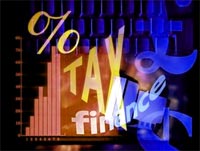|
|
| Help | |
| You are here: Rediff Home » India » Get Ahead » Money » Invest |
|
| |||||||||||||||||||||||
|
| |||||||||||||||||||||||
Want to do some tax planning? Take a good look at mutual funds that offer Equity Linked Savings Schemes.
What's ELSS?
 An ELSS is the mirror image of a diversified equity fund.
An ELSS is the mirror image of a diversified equity fund.
This means the fund manager will invest in shares of various companies across various industries.
What sets it apart is the added tax benefit, something a diversified equity fund does not offer.
ELSS funds have a lock-in period of three years. This could be restricting, but look at the other side of the picture -- the lock-in period prevents unnecessary withdrawals and helps your money grow over a period of time.
If you are wondering why a three-year lock-in period is necessary, it is because you need to take a long-term view when you invest in equity. The real potential of equities starts to show only after a few years. This allows you to ignore the short-term slumps and stay invested for the long haul.
The tax benefit
Investments in ELSSs fall under Section 80C.
The limit under this section is Rs 100,000.
This is irrespective of how much you earn and under which tax bracket you fall.
Also, there are no sub-limits under this overall Rs 100,000 amount.
So, if you choose, you can invest the entire amount in ELSS or infrastructure bonds. How you utilise the limit of Rs 100,000 is entirely up to you.
The dividends you earn in an ELSS are tax free.
When you sell the units of these funds, you can benefit from long-term capital gain, under which you don't have to pay capital gains tax.
The good players
Check out the performance of some of the seasoned players. These were their Net Asset Values on July 19, 2005.
On an average, the ELSSs' returns are 72.86% (one year return) and 47.61% (three year return).
HDFC [Get Quote] Long Term Advantage
Net Asset Value: 57.502
1-year return: 74.75%
3-year return: 61.99%
HDFC Tax Saver (Growth option)
Net Asset Value: 86.023
1-year return: 110.42%
3-year return: 64.26%
Prudential ICICI [Get Quote] Tax Plan (Growth option)
Net Asset Value: 58.71
1-year return: 113.65%
3-year return: 64.58%
Magnum Taxgain
Net Asset Value: 39.68
1-year return: 149.43%
3-year return: 70.54%
The new player
Reliance [Get Quote] Tax Saver from Reliance Mutual Fund is the latest entrant in the ELSS category.
The minimum investment in this fund is Rs 500; you can invest in multiples of Rs 500 thereafter. During the initial subscription period, the fund will not charge an entry or exit load.
These fees -- which are a percentage of the total amount -- are charged when you buy the units of a fund (entry load) or sell them (exit load). For instance, it could be 2% of the amount invested (entry load) or 2% of the amount withdrawn (exit load).
The fund will be initially open for subscription from July 25 to August 23, 2005.
The added bait in this fund is the personal accident death insurance cover. The amount of cover will depend on how much you have invested in the fund.
Investment amount: Less than or equal to Rs 10,000
Cover: Rs 50,000
Investment amount: Between Rs 10,001 to Rs 25,000
Cover: Rs 2,00,000
Investment amount: Between Rs 25,001 to Rs 50,000
Cover: Rs 3,00,000
Investment amount: More than Rs 50,001
Cover: Rs 5,00,000

Disclaimer: While efforts have been made to ensure the accuracy of the information provided in the content, rediff.com or the author shall not be held responsible for any loss caused to any person whatsoever who accesses or uses or is supplied with the content (consisting of articles and information).
|
|
| © 2008 Rediff.com India Limited. All Rights Reserved. Disclaimer | Feedback |